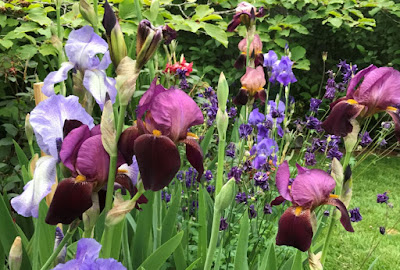Another recent purchase was a Great Northern flatcar. The
Great Northern main line did not cross the Palouse nor did it build any branch
lines to access the area as the Northern Pacific already had it well covered,
but GN cars would have been seen on the Palouse given its close relationship with
Northern Pacific and its ownership stake in the Spokane, Portland &
Seattle.
 |
| Did you know that the Rocky Mountain Goat is not a goat but an antelope? GN fans do. |
Flatcars are used to haul anything big and bulky that
couldn’t easily be managed by other cars. They often have pockets along the
side for tie-down chains or stakes to secure the load. For my car I’ve added
stakes and loaded it with a few logs headed to the mill.
 |
| GN 46302 crossing the drop girder bridge. |
In a previous blog post on the town of Palouse I briefly mentioned the Washington, Idaho and Montana Railway. This shortline
was constructed to haul logs out of the Idaho mountains to the Potlatch Lumber
Mill, and haul finished lumber products from the mill to Palouse where it would
interchange with Northern Pacific (and, ostensibly, the Palouse, Elberton &
Ainsworth). Logs in, finished lumber out. The WI&M used flatcars similar to
this one for hauling raw logs. The Washington, Idaho & Montana Ry. History Preservation Group has an online photo gallery which includes this great picture of flatcars loaded with logs.
 |
| Loaded with a few raw logs, headed for the lumber mill. |
Below are links to a couple of pictures of GN flatcars in Big Sky Blue, plus a couple of pictures showing flatcars used for hauling logs:
- GN flatcar 65722 is painted blue but it’s hard to tell from all the grime and rust.
- This old GN flatcar is the same shade of blue as mine, but it’s well past it’s useful life and headed to the scrap heap. You can see the reporting mark has been crossed out and “RETIRE” is now painted on the side.
- This image shows flat cars from the Tacoma Eastern Railway fully loaded with logs.
- And this Kinsey photograph shows logs being loaded onto a Great Northern flat car in Skagit County, Wash. in 1906.
 |
| Just for fun, a picture of the bearded iris as they're in full bloom now. Yes, they have beards just like Rocky the Great Northern Goat (who is actually an antelope). |












